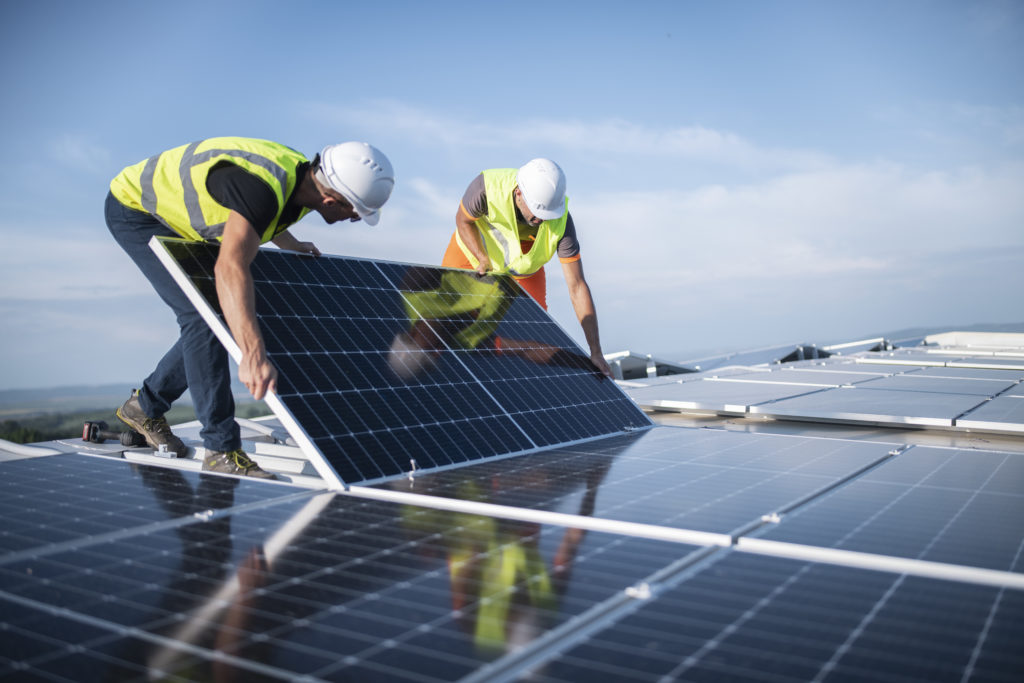
Solar importers led a vicious lobbying campaign that looked to gut the future viability of American solar manufacturing. Then came a legislative surprise.
Editor’s note: The Alliance for American Manufacturing team is counting down the top manufacturing news stories of 2022 all this week. Read No. 5 and No. 4.
Early this year, a small manufacturer in northern California called Auxin Solar petitioned the U.S. Commerce Department to investigate solar panels imported from Southeast Asia. Those imports, the petition contended, were essentially being made in China before being rerouted through nearby countries to avoid U.S. duties on Chinese solar imports. That’s called circumvention, it’s a no-no, and most of the solar energy industry in the United States freaked out in response.
Auxin got dragged pretty hard by many of its erstwhile colleagues, but in context it made grim sense: The American solar industry in 2022 is largely an installation industry, as there’s not much solar manufacturing done in the United States. The companies that dominate it don’t want the products they import to cost more for consumers, unfairly traded or not. So, through their association, they went ham trying to head off the duties that could follow if the investigation found that circumvention was taking place.
This effort included apocalyptic claims that an affirmative finding would cause solar energy deployment to dry up; allies in Congress trying to squash the Commerce investigation outright; and, of course, a smear campaign against Auxin.
Commerce was legally obligated, however, to follow through with the investigation. And there’s still a reason that anti-dumping and countervailing duties (AD/CVD) have been applied to Chinese solar panels for a decade: Chinese state-owned companies dominate the global solar supply chain and got to their commanding heights by, as this informative American Prospect article put it, “overproducing and underpricing polysilicon wafers, solar cells, and modules in order to gain market share on production.”
What’s more, it must be noted that in the years since the problem around Chinese solar imports has grown much worse. The solar industry there is now tied to credible accusations of using forced labor, part of the Chinese government’s campaign to subjugate Uyghur and other ethnic minorities in the country’s far west.
So what happened? The Biden administration under pressure split the baby: The Commerce investigation was allowed to move forward, but regardless of its findings the administration announced a two-year freeze on new duties on Chinese solar imports. The solar industry trade association was very pleased with this outcome.
And what did the Commerce investigation ultimately find? It found half of the companies accused of circumventing solar panels through third countries to avoid U.S. duties were innocent. But half weren’t.
Perhaps this provides a good example of the challenges of governing, wherein the Biden administration had to weigh its political promises to greatly expand renewable energy use in America against its responsibility to adhere to established trade rules, which in this case were undercut.
But, at any rate, the claims Auxin petition would trigger the U.S. solar industry’s collapse didn’t pan out. In what was actually a bit of a surprise, Congress managed to pass an enormous, clean energy industrial policy bill called the Inflation Reduction Act (IRA), and attached Buy America rules and apprenticeship requirements to the tax credits consumers can claim for buying clean energy equipment like electric vehicles, heat pumps and solar panels.
Putting those stipulations in there is hugely important, because it ties capital investment and domestic job creation to the discounts that these companies are eager to qualify their products for. If you’re an automaker or a solar company that wants to be a player in the huge market of American consumers who will increasingly be buying these things, there are now significant financial incentives for locating your production in the United States and hiring and training up American workers.
It’s just like AC/DC says: Money talks. Incentivizing companies to invest here is successful, thoughtful industrial policy in action.
The IRA’s early results have been satisfying, to say the least. In the three months following the IRA being signed into law, new clean energy capital investments totaled $40 billion, equal to the entire amount invested in 2021.
Renewable sources, meanwhile, are on track to generate more energy in the United States this year than both coal and nuclear. Wind, hydropower and solar energy will account for 20 percent of the U.S. power supply this year, which is a steady increase from the year before. The IRA – which spends $369 billion to spur a national shift to clean energy use and includes a $50 billion investment in clean-energy manufacturing – is working.
All told – and despite the huge fit thrown over the solar circumvention petition that turned out to be warranted – it was a good year for the prospects of clean energy production in the United States. The IRA is preparing a market in which domestic manufacturers of these products can thrive, and it’s doing so in a way that guarantees equity. Americans are going to be making this stuff, not just buying it from companies that make it overseas.
But to make sure it works as intended, the rules will have to be written correctly. The details about what qualifies as an American-made product need to be explicit. And then it will take actual, bona fide trade enforcement to make sure investments spurred by this industrial policy aren’t invested elsewhere. That means that dumped and subsidized products should be identified as such and only enter the U.S. market with appropriate tariffs applied.
Remember: Ensuring fair play is a continuous effort and doesn’t stop because we (finally) have decided to build up our own industries. To make it a truly successful industrial policy will require trade enforcement. And now that we’ve got the incentives in place, we need to make sure everyone participating in these markets is doing so fairly.
